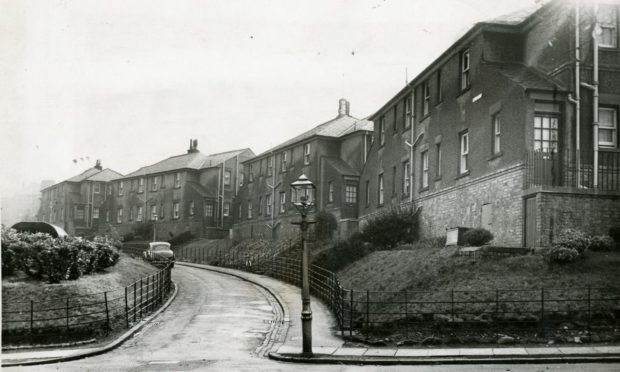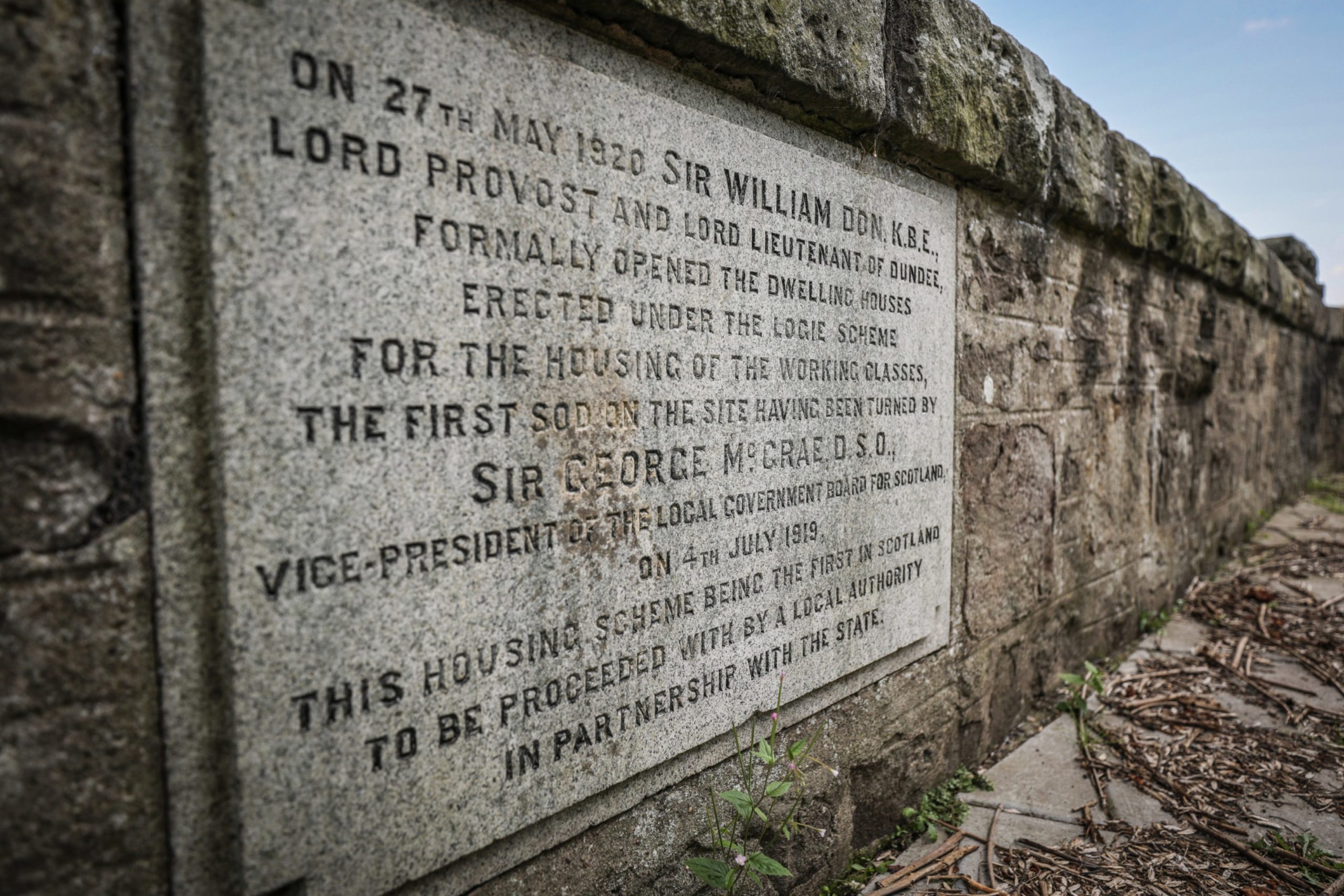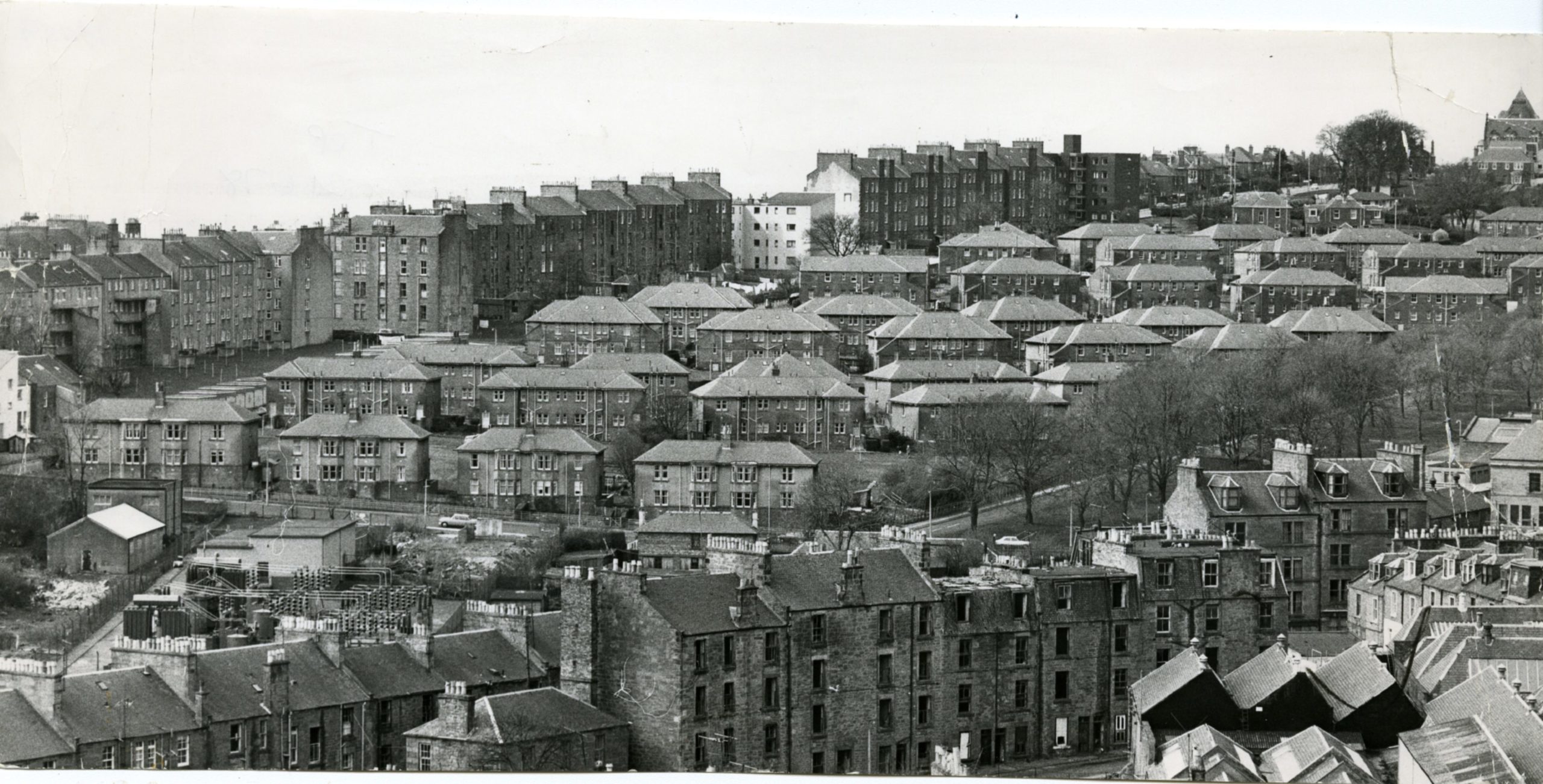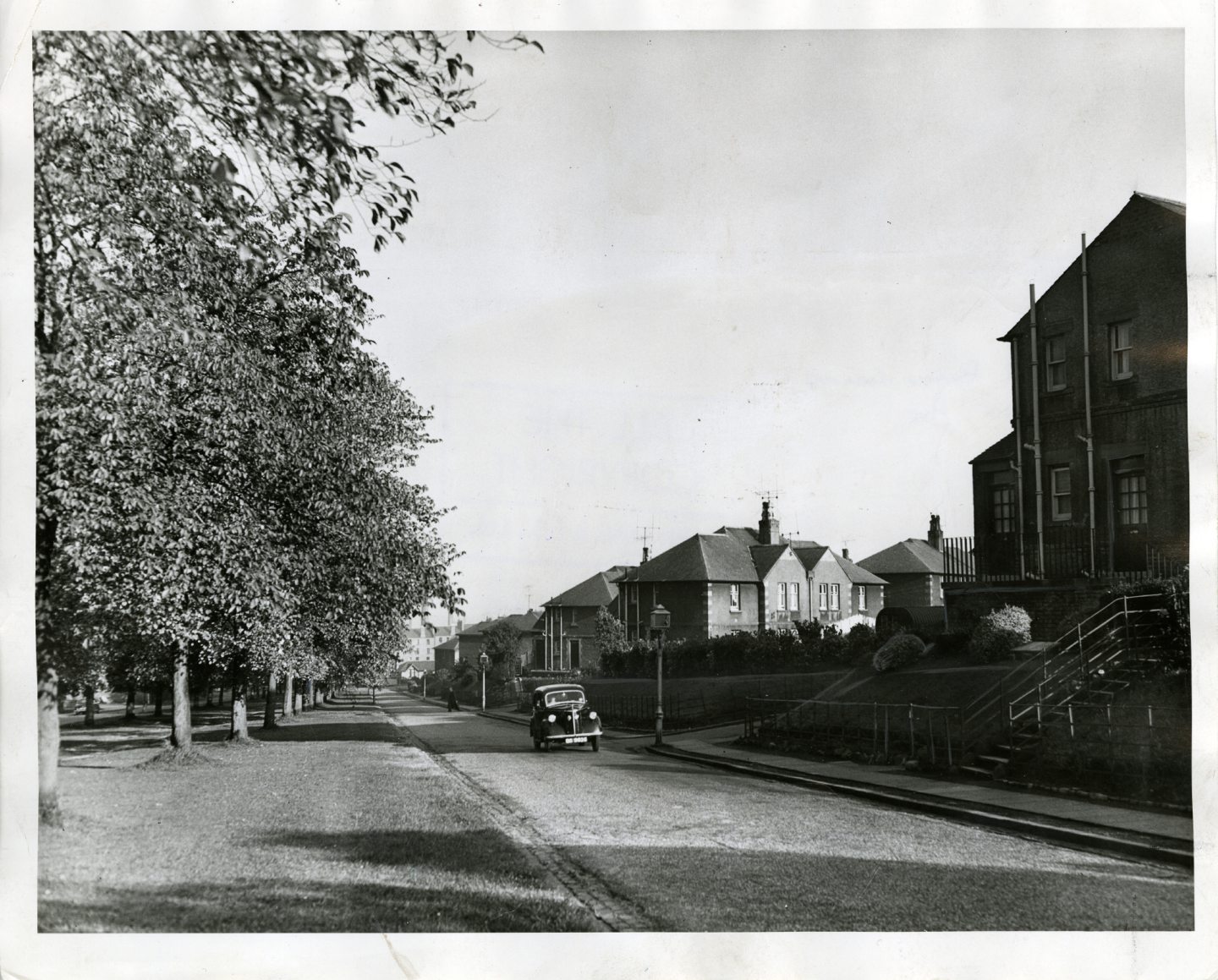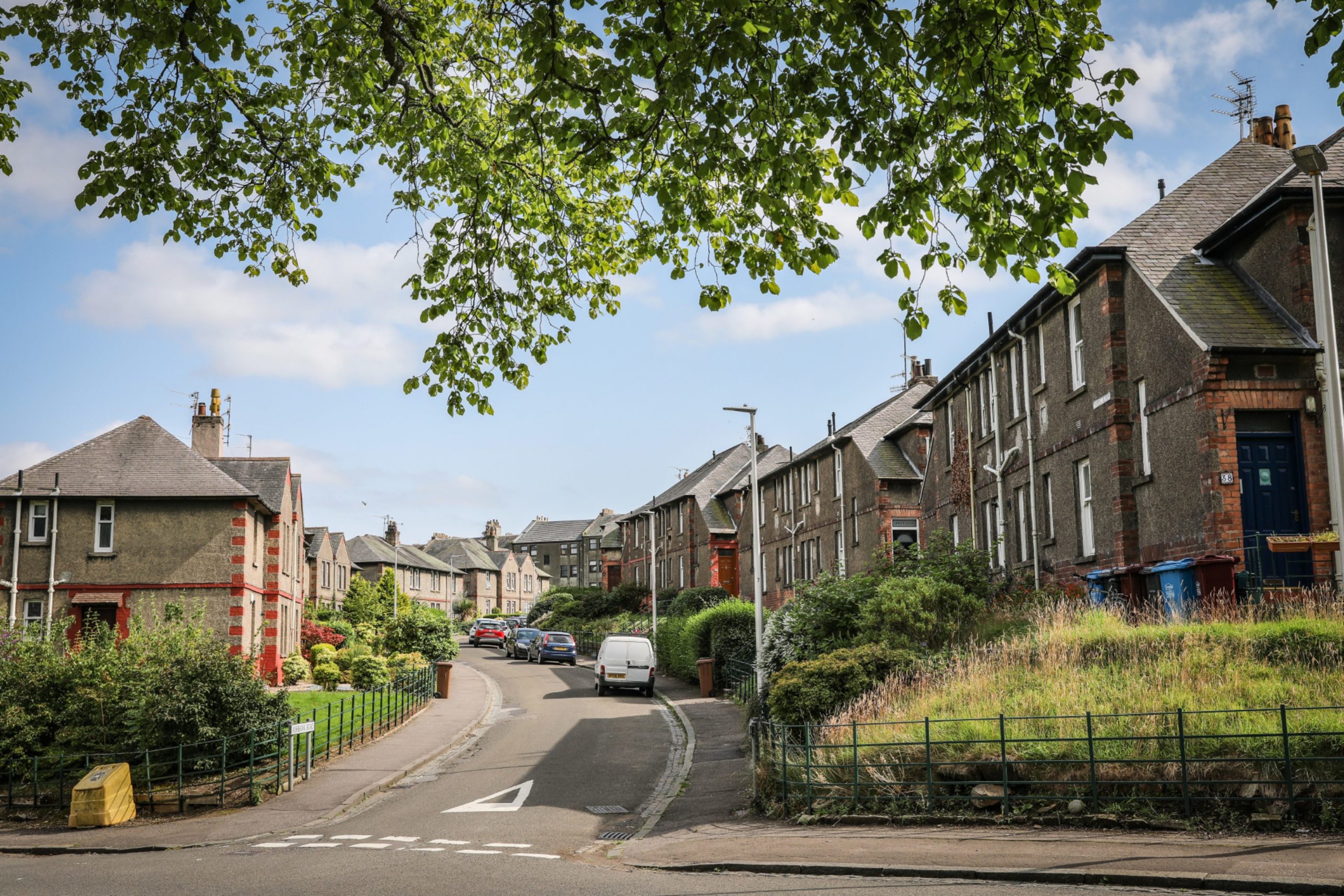On May 27 1920 the then Lord Provost of Dundee Sir William Don formally opened Logie Estate, Scotland’s very first council housing scheme.
Now over 100 years later the 250 homes are still standing, and community project, Logie 100, wants to celebrate the centenary by sharing the stories, photographs and memories of those who lived in the area.
Among the aims of the project is the creation of a community archive which would build upon the historical material currently held by Dundee City Archives.
The story of the Logie Estate
In 1905 Dundee Social Union carried out an innovative study of housing conditions in Dundee’s slum city centre.
Inspectors visited more than 6,000 properties and discovered housing conditions were appalling and accounted for a huge range of diseases and, probably, high levels of child mortality.
The end of the First World War in 1918 created a huge demand for working class housing in towns throughout Britain.
The estate was built as part of a promise made by Prime Minister David Lloyd George during the First World War to create “homes fit for heroes” after the conflict.
In 1919 parliament passed the ambitious Housing Act, which promised government subsidies to help finance the construction of 500,000 houses within three years.
The 1919 Act – often known as the Addison Act after its author, Dr Christopher Addison, the Minister of Health – made housing a national responsibility, and local authorities were given the task of developing new housing and rented accommodation where it was needed by working people.
Slum clearance and new building began on a national scale.
The homes paved the way for a new style of housing
A Dundee councillor, the Rev Walter Walsh and pioneering city engineer James Thomson had detailed plans ready when the Bill was passed and got the Logie Estate under way.
Thomson deemed the Logie site as being in close proximity to the city centre and suitable for high quality tenements or cottage-type housing with “space in profusion for gardens and allotments”.
Thomson decided to construct Logie’s houses from brick which was a controversial decision, given the recommendation to use locally quarried stone.
Bricks had to be imported from over 40 miles away, causing substantial delays later in the build.
The street names Logie Avenue, Sycamore Place, Elm Street, Lime Street, Ashbank Road and Birchwood Place were selected to reflect the green and spacious nature of the estate.
The homes paved the way for a new style of housing as they were built to a two-up, two-down design, in sharp contrast to the tenements that dominated the area.
The homes cost £230 each to construct and the rental cost for a two-room property was one shilling and three pence, whereas the cost for three rooms was one shilling and nine pence.
Valuation rolls from 1920 give details of the jobs of the first tenants, which included artist, railway clerk, telegraphist, soldier, jewellery salesman and commercial traveller.
In the period between the First and Second World Wars, around 11,000 council houses were built in Dundee, using a diverse range of materials, including concrete, brick, wood and even metal from melted-down aeroplanes for prefabs.
Quickly, Dundee had one of the highest proportions of council tenants in Britain.
Logie 100 project wants locals to share their stories
Although celebrations to mark the centenary were put on hold last year due to the Covid-19 pandemic, the Logie 100 project hope they can muster up enough support to tell the real-life stories of the estate from the early 20th century right through to the present day.
Matthew Knights, founder of the Logie 100 project and freelance writer, said: “I moved to Dundee six months ago from Edinburgh and came across the estate as I live not too far away.
“I noticed the plaque commemorating it as being the first social housing estate in Scotland and realised that the centenary had just passed but obviously with the lockdown over the past year nothing was able to be done to mark the occasion.
“I run a theatre company and I am also a creative writing tutor so I am always on the look out for stories that I can tell but always want to tie them in with a community based project.
“I started making connections with Dundee City Council Archives and the Abertay Historical Society who had already started doing some research and we have now released a survey hoping that locals will share their stories from over the years and also let us know how they would like us to celebrate the centenary.
“I am really passionate about telling the unheard stories and also connecting those to the present day and showing how life on the estate has changed and show the history that is on our doorstop.
“We have already had a great response to our survey and would love to hear from more people around Dundee and further afield with their stories going forward and what kinds of events and activities they would like to see organised such as creative writing workshops.
“We hope, in time, to build this material into the historic collections already held by Dundee City Archives and create a more longitudinal profile of Logie Estate and its people, both past and present.”
Pioneering district heating scheme
The Logie scheme’s 250 maisonettes were incorporated into a municipal heating system that supplied central heating and hot water to each house.
The coal boiler house that supplied the residential development also provided a public wash-house for the surrounding area.
This was the first scheme of its kind in Europe and the first lets were prioritised for ex-servicemen.
The district heating scheme was closed in the late 1970s and individual central heating was installed in each house.
Residents past and present can take the Logie 100 survey here and follow the project’s progress by following its social media pages.
Forgotten fire: Logie School in Dundee was engulfed in flames 20 years ago
